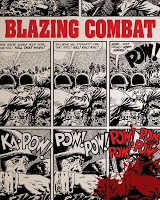In the days before the internet, comics letters pages were important to fans. It was one of the few places you could connect with other fans and read what they thought about recent issues, the art, the quality of the writing, etc.
Letters pages also gave most fans their first insights into how comics are made and who made them.
I first read the letters columns in Marvel’s Star Wars comics starting sometime in 1978. Those comics were for a while one of the few Star Wars products available, and the only official new stories. I read and re-read those comics — and re-read them again.

Star Wars #11 (May 1978) 
Star Wars #12 (June 1978) 
Star Wars #13 (July 1978) 
Star Wars #14 (Aug. 1978) 
Star Wars #15 (Sept. 1978) 
Star Wars #16 (Oct. 1978)
I specifically remember reading the first arc with Archie Goodwin as writer and editor. It was issues #11-15 (May-Sept. 1978). The art was by Carmine Infantino and Terry Austin. I bought each issue as it came out and loved it. It was the first time I read an extended story over multiple issues of a comic book and I was hooked.
Eventually, I noticed the letters pages, and read those, too. It was then that I began asking questions like, “Who’s Archie?” “Who’s Carmine?” “What’s an inker?” Discovering the credits finally clued me in that there were actual people writing and drawing these comics. And they were different. I had read the previous issues by Roy Thomas and Howard Chaykin, and I probably was even vaguely aware of having seen their names in the book. But it wasn’t until seeing the completely different outcome that Goodwin and Infantino brought to the comic that it became clear just how much impact the writer and artist had on a comic book.
Putting pen to paper
I remember only once writing a letter of my own. It was after reading Star Wars #26 (Aug. 1979), which had this really cool sequence where Luke Skywalker flies a stolen TIE Fighter into the gas giant Yavin to take out a hidden Imperial base. The story ruled, but Infantino’s art had become increasingly abstract. I’d looked at other comics with more conventional art styles and wanted the characters and ships in Star Wars to look a little more like they did in the movie.

I have since changed my mind about Infantino’s art on Star Wars and love it unconditionally.
Being that into Star Wars at the time meant I was really down for Battlestar Galactica. In Canada, the pilot was shown in theaters months before it aired on TV. I saw it several times and was excited for it to become a TV show that would air every single week.

Battlestar Galactica #4 (June 1979) 
Battlestar Galactica #5 (July 1979)
Of course, it also became a comic. A friend had the treasury version that came out with the movie release, but Marvel re-adapted it for the first three issues of its monthly comic series. The next two issues after that saw Walter Simonson draw an adaptation of “The Lost Planet of the Gods,” and it was better than the show. I read that comic for the next two years — long past the show’s cancelation — and in particular loved the issues Simonson drew. He later started to write the book as well, and it somehow got even better.

Battlestar Galactica #16 (June 1980) 
Battlestar Galactica #19 (Sept. 1980) 
Battlestar Galactica #23 (Jan. 1981)
It was at the time a special thing for me — almost like the show hadn’t really gone away. Of course, that didn’t last.
I read on the letters page of Battlestar Galactica #22 (Dec. 1980) that the series “isn’t much longer for this world. Next issue will be the last.” I was bummed. And the next issue, #23, was indeed the last.

Shortly after that, I stopped reading comics — and letters pages — for a few years. When I resumed reading and collecting comics in the mid-1980s, the letters pages were still there to inspire.
More on that next time.






















